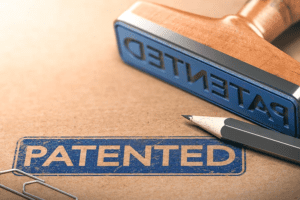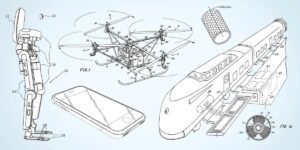What Is the Difference Between the Utility Patent and Design Patent?

The world works around new and innovative design and utilities. Everywhere we look things have a type of look and feel, or use and benefit to us in our daily lives. The reason these things exist is that someone somewhere came up with the idea, got it legalized, and made it public for the world to see and use.
When something is being used it is often referred to as a utility, while the design is the outer appearance of an object or entity. When taking this theory into a legal sense, there are two common theories related to this which are Utility patents and design patents. A patent on its own refers to a form of intellectual property that typically gives its owner the legal right to stop others from using or making copies or selling the item.
So, if for example, someone invents something which has been granted by their government, it gives the inventor the right to stop others from either making the same thing for a set period or buying it, selling it, or making any kind of changes to it. The United States Patent and Trademark Office is the responsible authority for it. Further information regarding this and their website can be found here.
Three things That Your Invention Must Have
For it to be patented legally by any appropriate authority, three things must be considered. These include:
It Must Be New. This entity, no matter what it is, must never have been made public previously, and in any part of the world taking into consideration the date of which it has been filed.
Must Involve Invention of Any Kind. In comparison to items like it on the market or anywhere in the world, the idea must not be blatantly obvious to those who know about it.
Must-Have Industrial Application Capabilities. It must have a use in any kind of industry. This would typically mean that it should have a practicality as a form or device or apparatus such as a new type of material, method, or industrial process.
Filing one can be done in very easy steps. Although it is good to remember that the things you cannot get legally done in this format include songs, plays, and a book because this will fall under a copyright clause and has a separate means of the procedure.
First you would look on the USPTO website for information regarding this (the United States Patent and Trademark Office), then you would hire an attorney specifically for this purpose, which will help you determine the one that’s best suited for your needs, thereafter a provisional application is completed and can be filed via fax or mail after which you become a registered eFiler, once your participation in the process is completed by a few further steps, you will wait for the outcome, which could take a few months.
In some cases when the application is rejected, you may apply for an appeal with good reason, only if this happens two times https://www.inc.com/larry-kim/how-to-file-a-patent-in-8-easy-steps.html.

The Distinction Between Design and Utility Patents
Now that we have covered the basics, we will get into the main idea of this article, which is the difference between the two.
How It Looks or Design: Essentially, this patent protects the way an entity looks. This includes anything from its configuration, shape, or surface. The applications include only a single claim and in general, if you are worried that a competitor will copy your design, then getting a patent will help with that. Usually, this will last for at least 15 years from the date granted.
These types of legal considerations are appropriate for three-dimensional product shapes. For instance, something that looks good and only protects the non-functional aspects of it. Consulting with experts in the field like Tatonetti IP will help clear this distinction out for you. Furthermore, the cost of getting a design patent is far less than the utility one but the probability of it getting rejected is low and can take up to 19 months to pull through.
Some of the entities that can fall under this category include car accessories such as the design plus the stickers, roll bars, etc., clothing and apparel, GUI or Graphical User Interface elements such as icons and virtual characters, an electronic device such as smartphones, computer equipment, etc., and children’s toys or stuffed animals, instruments such as used in the medical fields and many other articles.
How It Works or Utility. Also known as a “patent for the invention”. When wanting to protect the practical features of your entity or concept, then one should apply for a utility patent with the appropriate services. Sometimes one may need to apply for both on special cases. The rejection probability of this type is higher than the above and it takes longer to process as well, sometimes up to 30 months. Although the life-span is up to 20 years and is more durable. Categories of these types include mainly software and usable goods.
Claims can vary depending on a lot of things and depending on the attorneys you choose to help you out with it. Because this is a complex process and everything needs to be done as best as possible and within the shortest time frames, it is important to find the right people who can handle things for you from concept to completion and make sure about a favorable outcome.
